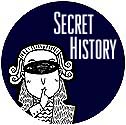
Comment
on this story
|
 |

Tea and bullets in quaint, Edwardian Knoxville
by Jack Neely
Last week, the police chief was asked to comment on Knoxville's relatively high percentage of gun ownership. He said it wasn't surprising, that owning guns is an old Southern tradition.
He's right, of course. The South in general and Knoxville in particular have longstanding traditions of gun ownership. Knoxville also has other traditions having to do with knives and brickbats.
I didn't intend to write about weapons this week. I meant to write about baseball. I was looking back at this week 95 years ago, innocently intending to do a story about the 1904 season, which somehow seemed relevant. That summer, baseball fans were complaining that Knoxville's baseball team was moving from its longtime site near downtown to a brand-new ballpark in a seemingly remote location miles to the east, out at Chilhowee Park. There were other parallels that June, too—among them, the grueling process of picking a new president for UT. But on the way to the sports pages of June, 1904, I was distracted by the cries of the wounded.
Health seemed to be on everyone's mind that year, and astute marketers used it in every context they could get away with. Knoxville was beginning to suburbanize, and the freshest, newest, healthiest suburb in 1904 was beautiful Lincoln Park, at the foot of Sharp's Ridge to the north. "In the cool shade of the groves out there, and drinking the cold and good mineral water," claimed the promoters, "you can understand the advantages of being in the suburb."
Even the East Tennessee Brewing Company, pitching its summer favorite, Palmetto Special Brew, put its health-conscious side forward in its ads: "The Best Argument that our beer is pure and healthful," they claimed, "is that it builds up the constitution and gives strength to the weak and debilitated."
Not all of Knoxville's habits in 1904 were quite as healthy as suburban living and beer drinking.
The woman the newspapers called Mrs. James Van Valkenberg was better known on the streets by her less-regal business name, Ida Love. In her childhood, they said, "no more beautiful girl attended the public schools. She was the pride of her home...." She married James Van Valkenberg, a printer, when she was only a teenager. But the two had problems and, sometime back in the '90s, they separated. She took to the streets and, for a decade, led what the papers called "a life of shame.... she was the sorrow of her parents."
"From bad to worse she went," they said, until that hot Wednesday afternoon, at her home on Kentucky Street, near what was then Knoxville's red-light district. At about 1:00, Ida Love, a.k.a. Mrs. Van Valkenberg, picked up a revolver and shot herself in the left breast; by the time a doctor arrived, the 28-year-old beauty was dead.
The following afternoon, down on Front Street, not far from the wharf, Mrs. Louisa Owenby strolled with her aunt for a teatime visit with Mrs. Alice Cole and her 16-year-old daughter, Blanche. Just 19, Louisa was a newlywed, the wife of Avery Owenby, a trolley driver just back from army service in the Philippines. While the Coles were entertaining their guests, Blanche asked her mother if she'd seen her side comb. When her mother replied she hadn't, Blanche went looking for it in a bureau drawer. There she was surprised to find a pistol. Laughing, the teenager pointed the pistol at their guests. "Look out, there," she said, and pulled the trigger. The bullet went through Louisa's forehead, killing her instantly.
For hours afterward, Blanche Cole was unable to speak. When it happened, Avery Owenby was piloting his trolley through Lincoln Park, the new suburb on the north side. At the transfer station, he heard his wife had had an accident, and went home to check.
Blanche Cole didn't want to attend the funeral, but Avery Owenby insisted. He placed no charges; it was obviously an accident, the authorities agreed, no need for an inquest. "Another 'didn't know it was loaded' incident," sighed an editor. It happened so often, it was getting to be a Southern tradition.
You couldn't blame all misery on guns, of course. The night before, U.S. Taylor, a fireman for the Southern Railroad, had an argument in Lay's Saloon with a bootblack named Jackson Douglas. Douglas followed Taylor out of the saloon and stabbed him, right there on Central. The wound was reported to be serious, possibly fatal. Douglas fled the scene, but a railroad detective nabbed him when he tried to hop a freight out of Lonsdale.
Meanwhile, in another house over on Richardson Street, not far from Ida Love's home, Albert Arnold shot Mary Henry. A lover's quarrel, they said. He escaped. The fourth uncaught Knoxville murderer in the last seven months, they said.
Meanwhile, a crap game over on Tennessee Avenue went awry. Either Charles Hill or James Bearden—no one was quite sure, because they were both armed—shot Blaine Sliger in the back. They'd been arguing over a quarter.
Jule Sullivan cut Jim Burley near DeArmond's Saloon. Down the street the same afternoon, a woman nicknamed "Sammy" Thompson attacked Jim Davis at Dewine's Saloon, the place sometimes known as Sullivan's. "They were both standing in the saloon drinking when they disagreed and Sammy with her knife proceeded to carve Jim," wrote the Sentinel, conceding that the afternoon on the Bowery was "rather lively."
Knifings and shootings were, after all, too commonplace in 1904 to take very seriously. That sort of thing had been going on in Knoxville for more than a century. Mayhem is a Southern tradition that goes back even farther than biscuits and gravy.

|